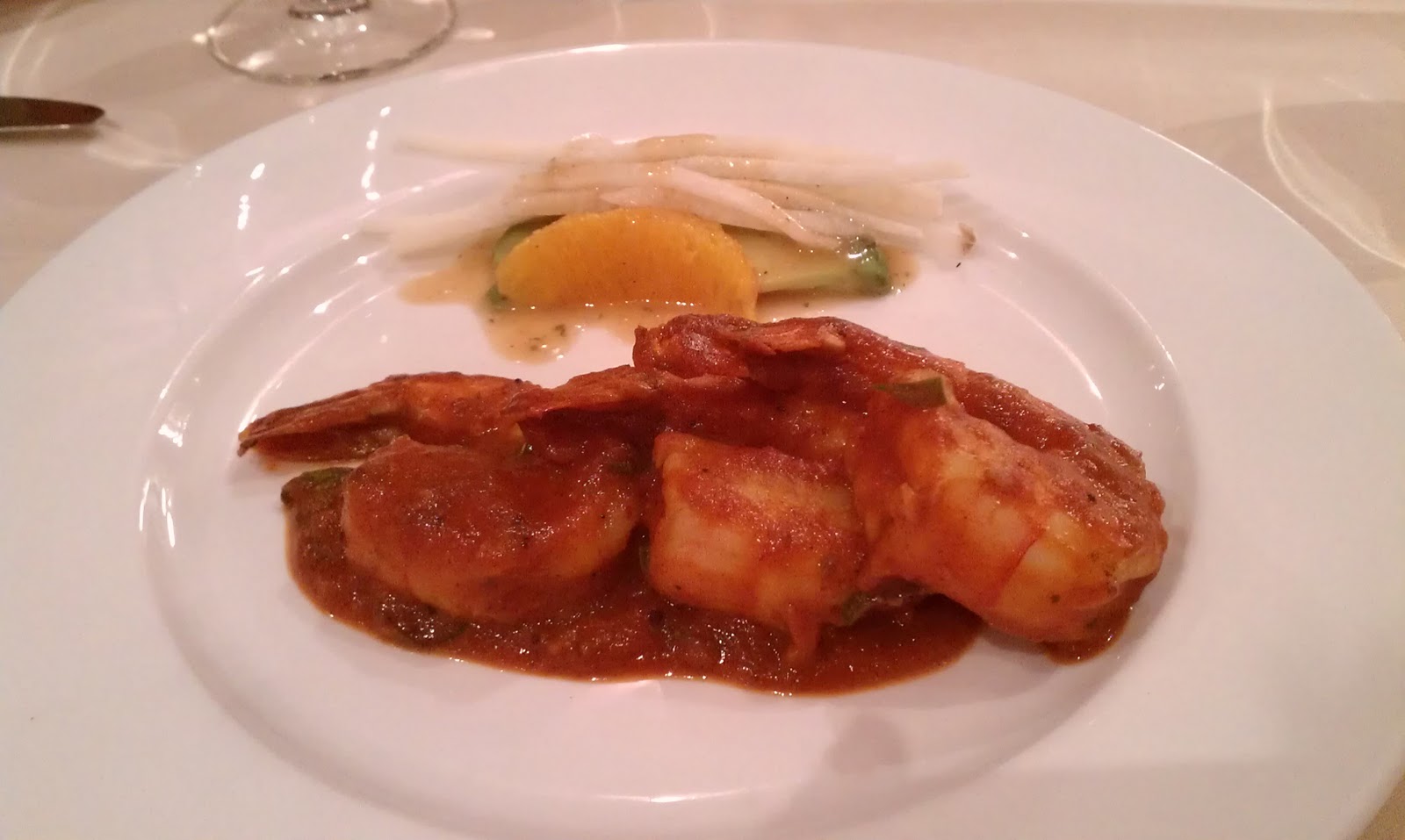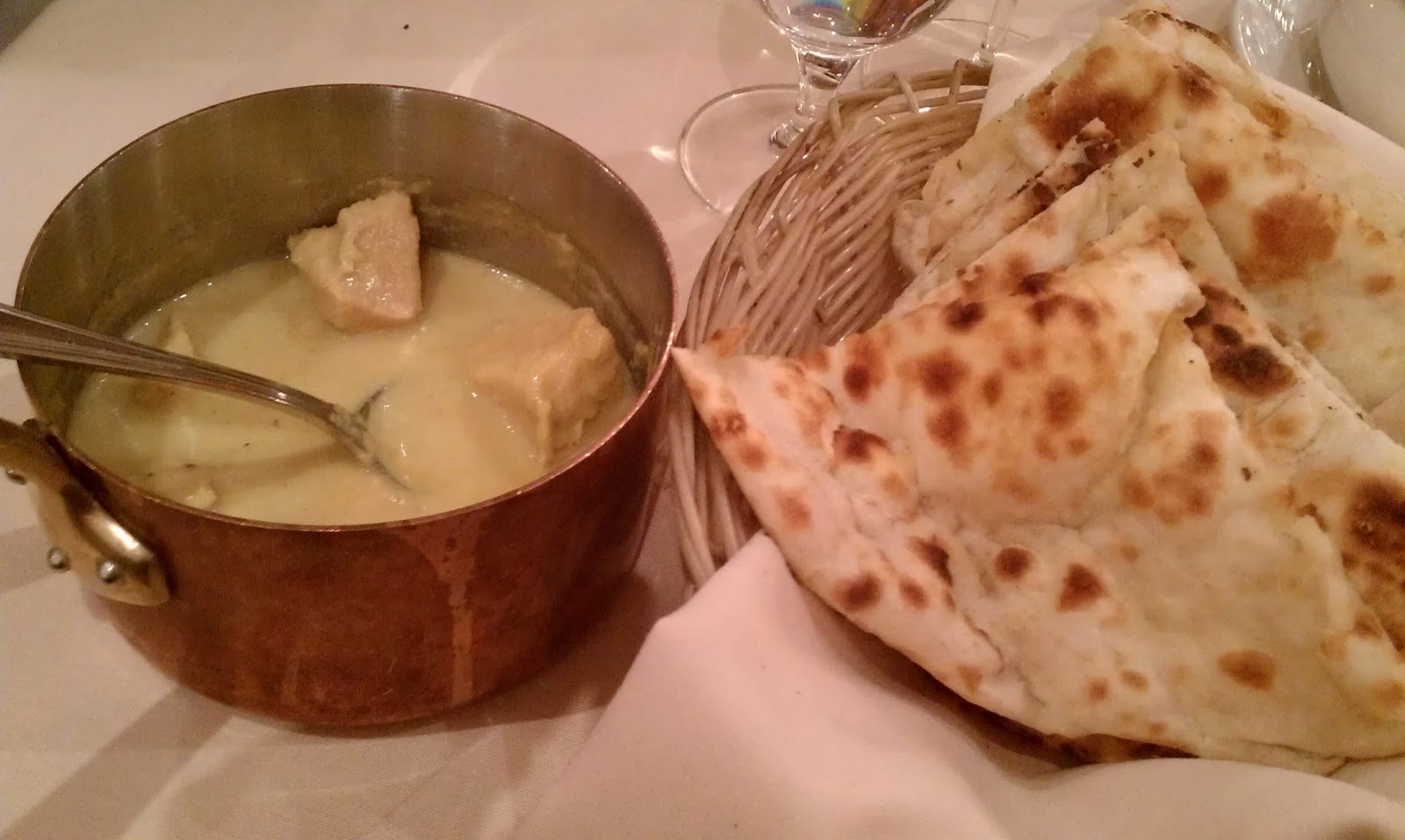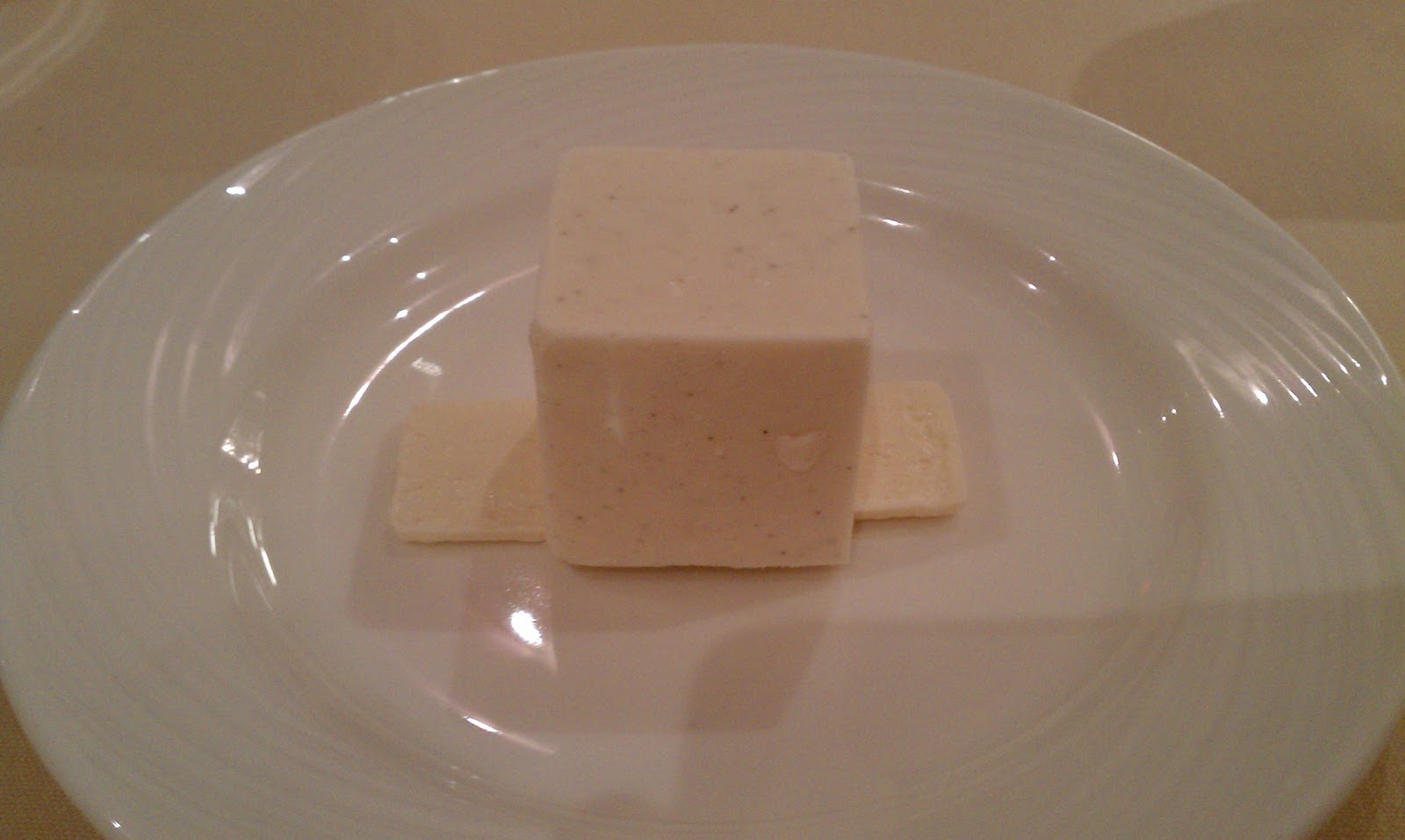 |
ROCK OF AGES: Aphrodite's Rock, to left of the gap.
Picture courtesy of Chindos Constantinou |
APHRODITE’S Rock off the coast of Paphos in southwest Cyprus is reputed to possess miraculous powers. One legend says that if you swim naked around it three times in an anti-clockwise direction at midnight you’ll enjoy lifelong fertility. Another take on the story promises eternal beauty. But my favourite tantalisingly suggests that for every three circuits you’ll become 10 years younger. Imagine all those elderly men on the beach yelling “Keep going, dear, keep going!” as their exhausted wives sink from sight.
There are few more spectacular sights in Cyprus than the sun sinking below the horizon as viewed from this magical spot, though testing the myth could result in eternal rest rather than eternal beauty as the currents around the rock can be treacherous.
No such fears in the pool at the 4-star Avanti Hotel in Paphos, where I recently chilled out for four nights and which is clearly doing something right — a couple from England have holidayed there 42 times in the past 18 years. What’s more, they always stay in the same room. I can well understand why they keep returning to this family-owned and family-friendly hotel, though the young lady at reception couldn’t understand when I tried to check out a day early — I got my dates wrong after a night out in the Shamrock Bar across the street.
The 243-room Avanti is a favourite with disabled holidaymakers. Ramps indoor and out ensure all public areas are easily accessible to wheelchair users, and three rooms are specially adapted to their needs. I’ve never stayed in a hotel where so much consideration is shown to guests with limited mobility.
 |
| DIP DIP HOORAY: Pool at the Avanti Hotel in Paphos |
The Avanti ticks all the boxes as a sunshine wedding venue, too — 32 couples from the UK and Ireland have booked to tie the knot there next year. One pair of newlyweds who were married in the hotel grounds last summer inadvertently left their buttonhole and bouquet behind when they went home, but they’ll find them preserved and lacquered and placed on their pillows when they return next July to celebrate their first anniversary. A nice touch, and another reason why the Avanti gets so many repeat visitors.
Sunshine is guaranteed almost year-round in Cyprus, though a late-night torrential downpour accompanied by a spectacular lightning show and deafening thunder provided some relief from the scorching heat. One minute, I was sitting on the terrace of the Shamrock enjoying a beer. The next, I was scurrying inside as the soaked-to-the-skin staff battled to roll down the shutters while rain ricocheted off the street like bullets. The following morning, the mid-October weather was back to normal, with the thermometer showing 70F/21C at nine o’clock. Come 3pm, it was 82/28 — enough to roast the island’s famed waxy potatoes in the ground.
Contrary to popular belief, prices in once-expensive Cyprus are now cheap. A pint of the locally-brewed Keo lager costs an average €2.50, and if you smoke, a 20 pack of Marlboro Gold is €4.50. Dinner for two with a shared tuna salad, fried aubergines to start followed by kleftiko (herb-infused slow-cooked lamb) for me, grilled rabbit for my colleague and fresh pomegranates for dessert with two big beers and two Cokes cost €38. When we asked for a couple of eggs in the salad, the waiter stepped into the adjoining garden and lifted them from the hen coop. A little later, he picked the pomegranates from a tree overhanging the dining terrace.
That was in Restaurant Pirki, just down the street from the 5-star Grecian Park Hotel in Ayia Napa/Protaras where we stayed for three nights before heading west (the Cypriots drive on the left on great roads) along the coast to Paphos.
 |
| BAY-EAUTIFUL: Konnos Bay, below Grecian Park Hotel |
The 239-room Grecian Park, in Cape Greco National Park, sits on a hill above Konnos Bay where a sandy beach, crystal clear water and an abundance of watersport facilities make it the perfect spot to sunbathe, swim or get towed on a giant inflatable banana behind a speedboat. An open-air cafe and bar with shady trees and a cooling sea breeze overlooking the bay provides shelter when it gets too hot on the beach, though it’s advisable to buy a bottle of water there before attempting the trek back up the steps to the hotel. If you stay in the Grecian Park and decide to spend an evening relaxing in the bar, do the staff a favour and buy rounds. A 14-strong party of respectable, middle-aged but miserly Londoners spent two hours drinking cocktails and then asked for individual bills. The waiter wasn’t impressed — it was a busy night — but he displayed remarkable reserve while he processed 14 separate credit card payments. And not one of them left a tip.
Ayia Napa and Protaras in the southeast of Cyprus are for those whose holidays are all about sun, sand and sea. At the other end of the island Paphos, the ancient capital, is more for visitors who like to mix sizzling on the beach with sizing up the sights. With so much to see in and around these popular resorts and farther afield, take an extra memory card for your camera as you’ll be clicking away like a pair of loose-fitting dentures.
Paphos’s archaeological park, full of the remains of Roman villas, fortresses and an intact amphitheatre, is a must-see (€3.40 entrance), but allow yourself three or four hours to get the most from your visit. It’s wise to go early to avoid the sometimes slow-moving queues that form to see the fabulous, 1,600-year-old mosaics in the Houses of Dionysos, Theseus and Aion depicting scenes mainly from Greek mythology. The nearby and equally vast Tombs of the Kings (€1.70) is an ancient Greek burial site dating from the third century BC, though the name is misleading as no royal personages were interred there. Rather, the tombs carved from solid rock were the resting places of around 100 moneyed merchants and aristocrats, but they’re so regally impressive that the name has stuck.
 |
| ROMAN-TIC: Mosaic in Paphos's Archaeological Park |
 |
| TOMB WITH A VIEW: Tombs of the Kings in Paphos |
Both of these World Heritage Sites are on the route of the open-topped tour bus (€12.50), but as neither allows vehicles inside they’re just stops and pick-up points along the way. If you opt to stay on board and simply sun yourself on the upper deck you’ll miss savouring centuries of history, but at least the taped commentary will point out the fire station, police HQ and Debenhams department store. Thrilling stuff. It’s better to stroll to the archaeological park, at the castle end of the esplanade, and if you want to see the Tombs, the 615 local bus (€2 return) will leave you at the entrance, but be very careful when crossing the busy main road to the bus stop for the trip back into town. If one spot in Cyprus is in urgent need of a light-controlled pedestrian crossing, it’s this one.
Paphos is an ideal base for excursions, and especially good are those offered by Andreas Coaches (call 00357 99602200), with hotel and villa pick-up and drop-off. Among the tours to choose from are Famagusta in the Turkish-occupied north of the island (€30, every Saturday, bring your passport); the capital, Nicosia, from where the Cyprus jury unfailingly awards Greece the maximum 12 points during the annual Eurovision Song Contest (€20, Friday); and Limassol (€20, Friday). We joined the Troodos Mountains trip (€20, Monday and Thursday) that takes in the wine-producing village of Omodos with free tastings, Mount Olympus for sweeping views of Turkish-occupied Northern Cyprus (the Turks invaded in 1974) from the island’s highest vantage point, Kykkos Monastery and the tomb and giant statue of former president Archbishop Makarios. The journey was a bit scary at times as driver George negotiated hairpin bends overlooking 1,000-foot drops like those in India in Ice Road Truckers: Deadliest Roads, but we were in safe hands.
Kalliopi Travel & Tours (00357 26818534, www.kalliopitravel.com) also offers a wide selection of day excursions, including a Jeep safari, and organises boat trips and scuba diving, so there’s no excuse for not getting out and about and exploring all that this divided but delightful island has to offer.
 |
| PEAK-A-BOO: Village of Omodos, Troodos Mountains |
Airports are great places for people-watching and eavesdropping, and Larnaca was no exception as we killed time waiting for our flight home. While mooching around in duty free, I spotted a remarkably sunburned man from Northern Ireland filling his arms with cartons of cheap cigarettes, much to the dismay of his teenaged daughter.
“Ach, Daddy!” she complained. “You said you were giving up the fags.”
“Listen, love,” said her father, “at these prices you’d be mad not to smoke.”
CYPRUS TRAVEL FILE
FROM DUBLIN: Thomas Cook Holidays Ireland operates weekly flights from May 27 to October 14, with 7 and 14-night package holidays and flight-only deals available. Choose from more than a dozen properties offering self-catering, B&B, half-board and all-inclusive in Ayia Napa, Protaras, Penera and Paphos. Packages start from €569 per person sharing based on 7 nights at the 3-star-plus Rising Star Apartments in Protaras. See www.thomascook.ie or call 01 514 0328. FROM BELFAST: Thomas Cook Holidays with Style offers 7 nights all-inclusive from £835pps in a Junior Suite at the 4-star Olympic Lagoon, Ayia Napa, departing May 2. See www.thomascookstyle.com Thomas Cook Families has 7 nights self-catering from £1,696 for 2 adults and 2 children at the 4-star Marlita Beach, Protaras, departing May 2. See www.thomascook.com Airtours offers 7 nights s/c from £494pps at the 3-star Vangelis, Protaras, departing May 2. See www.airtours.co.ukFLY: See www.flythomascook.com for dates and prices of seasonal flight-only deals from Dublin and Belfast. EAT: In Protaras, Restaurant Pirki (see above) for kleftiko, rabbit and moussaka. In Paphos, Restaurant Ta Mttavia and 7 St. George’s Tavern for traditional meze (umpteen small dishes of different meats or fish served hot and cold, savoury and spicy, with salads, breads, cheeses and yoghurt, for a minimum of two persons), The Seagull and Theo’s for seafood, The Pelican for grilled sardines, Hondros for kleftiko, Chloe’s for Chinese, Gold Sakura for Japanese. The Pinguino Cafe-Restaurant deserves special mention for going out of its way to provide a selection of gluten-free dishes (it also serves the best cocktails and ice cream in town).
 |
| THUMBTHING SPECIAL: Sardine lunch at the Pelican |




























